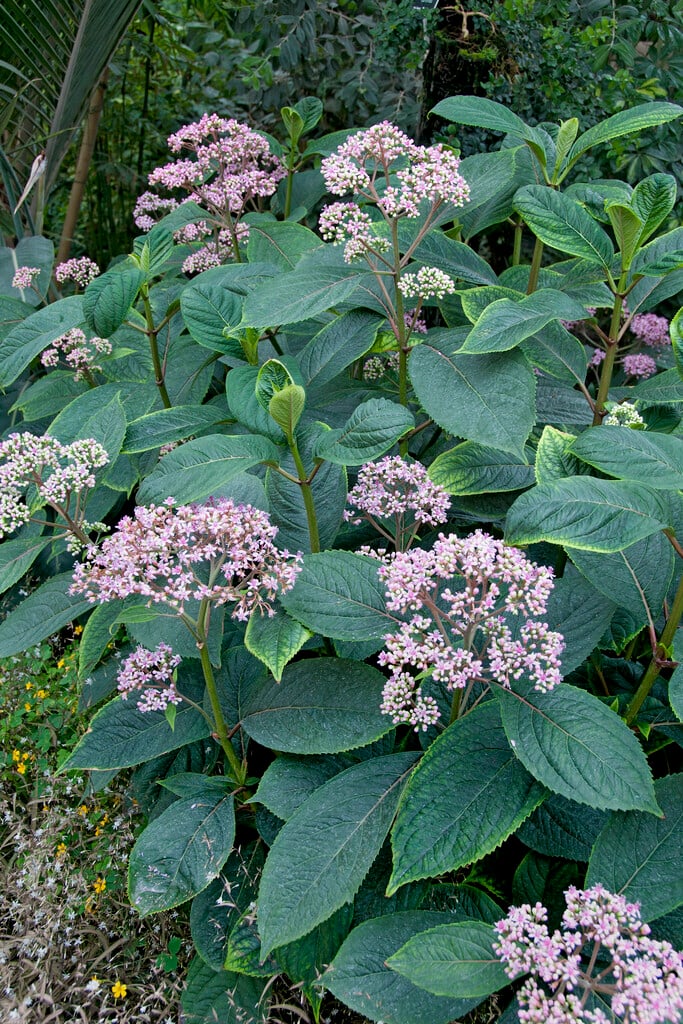Hydrangea febrifuga
Chinese quinine
An neat-growing, bushy evergreen shrub with glossy dark green leaves and growing to a height of 2-3m. For several months over summer, bears blue and white flowers in clusters followed by blue berries
Size
Ultimate height
2.5–4 metresTime to ultimate height
5–10 yearsUltimate spread
2.5–4 metresGrowing conditions
Moisture
Well–drained, Moist but well–drainedpH
Neutral, AcidColour & scent
| Stem | Flower | Foliage | Fruit | |
| Spring | Green | |||
|---|---|---|---|---|
| Summer | Blue Pink | Green | ||
| Autumn | Green | Purple Blue | ||
| Winter | Green |
Position
- Partial shade
Aspect
North–facing or East–facing or West–facing or South–facing
Exposure
Sheltered Hardiness
H3Botanical details
- Family
- Hydrangeaceae
- Native to GB / Ireland
- No
- Foliage
- Evergreen
- Habit
- Bushy
- Potentially harmful
- Skin allergen. Wear gloves and other protective equipment when handling. Pets (dogs, cats): Harmful if eaten. For further information and contact numbers regarding pets, see the HTA guide to potentially harmful plants
- Genus
Hydrangea can be deciduous or evergreen shrubs, or self-clinging climbers, with flowers in clusters usually comprising both small fertile and more showy sterile flowers; often good autumn colour
- Name status
Correct
- Plant range
- SE Asia
How to grow
Cultivation
Grow in any moist but well-drained soil in partial shade or grow in sun if soil remains reliably moist. Improve chalky soils with organic matter to support good growth. See shrubby hydrangea cultivation for further advice
Propagation
Propagate by seed, or by semi-ripe cuttings
Suggested planting locations and garden types
- City and courtyard gardens
- Cottage and informal garden
- Mediterranean climate plants
- Patio and container plants
- Coastal
- Sub-tropical
- Low Maintenance
- Conservatory and greenhouse
- Flower borders and beds
- Wall side borders
Pruning
Pests
May be susceptible to aphids, capsid bug, hydrangea scale and vine weevil
Diseases
May be susceptible to a leaf spot, powdery mildews, grey moulds (Botrytis) and honey fungus (rarely)
Love gardening
Sign up to receive regular gardening tips, inspiration, offers and more
View our Privacy Policy
Get involved
The Royal Horticultural Society is the UK’s leading gardening charity. We aim to enrich everyone’s life through plants, and make the UK a greener and more beautiful place.
